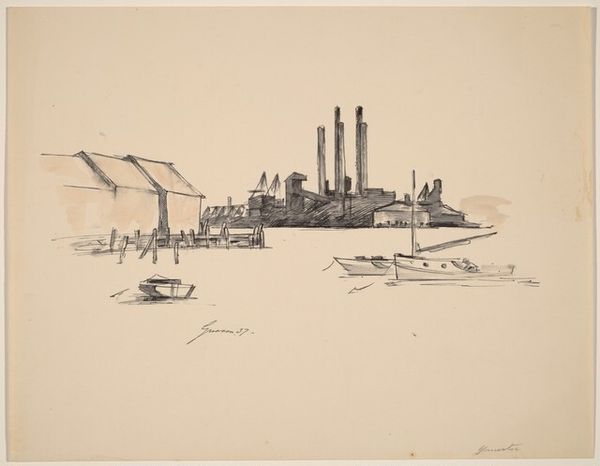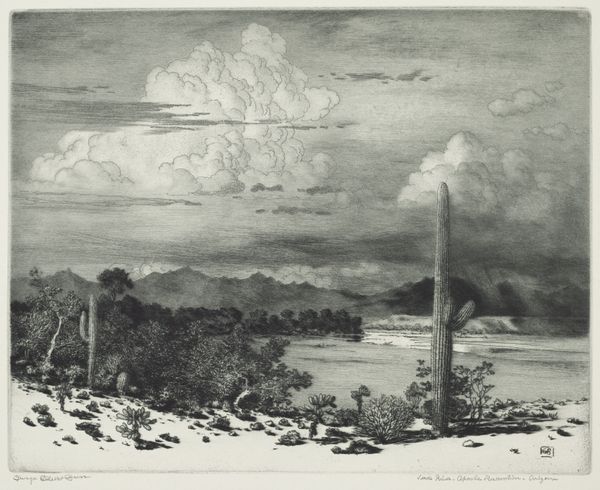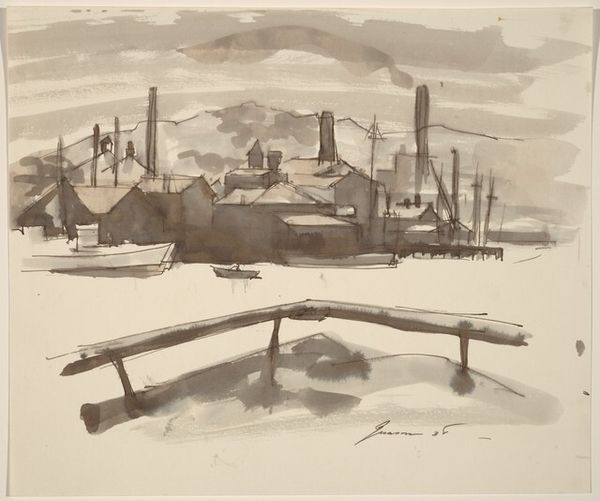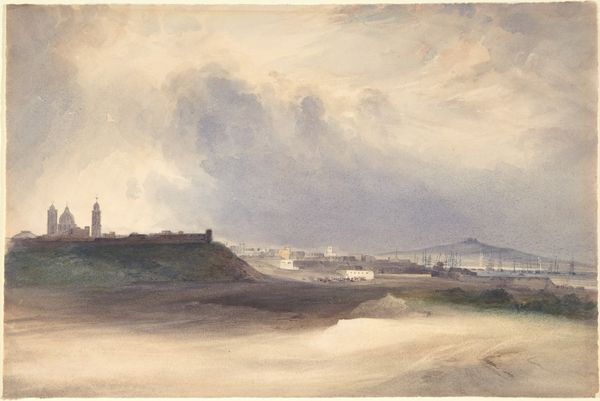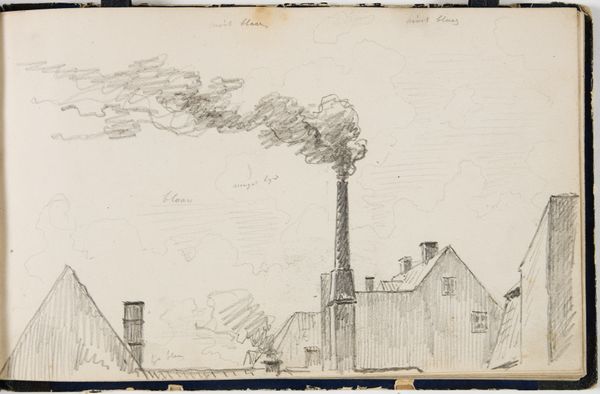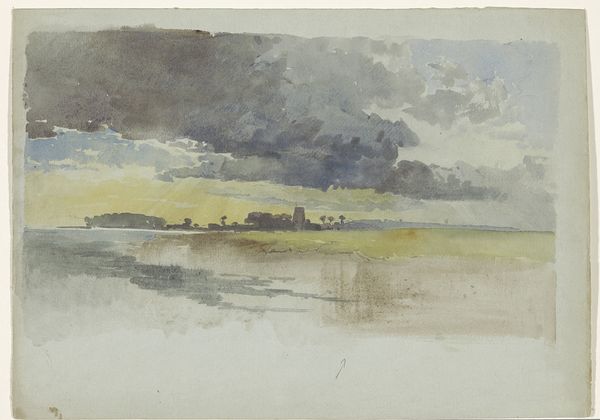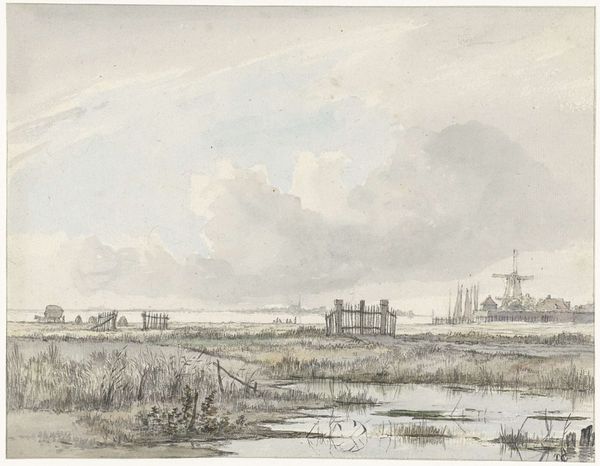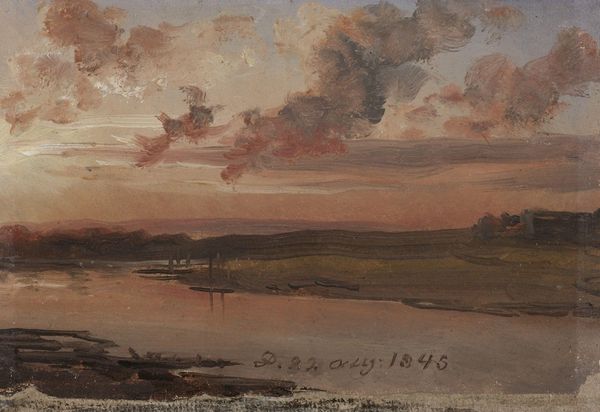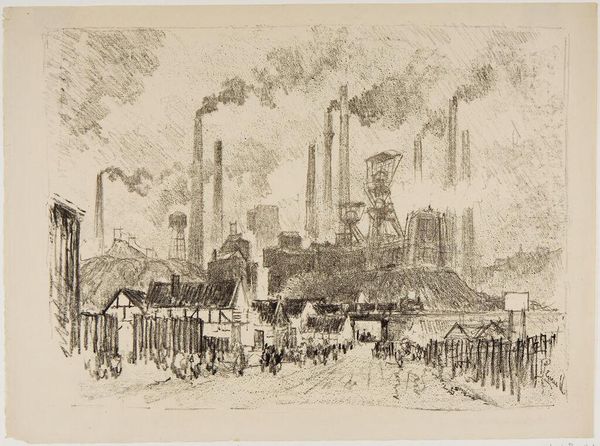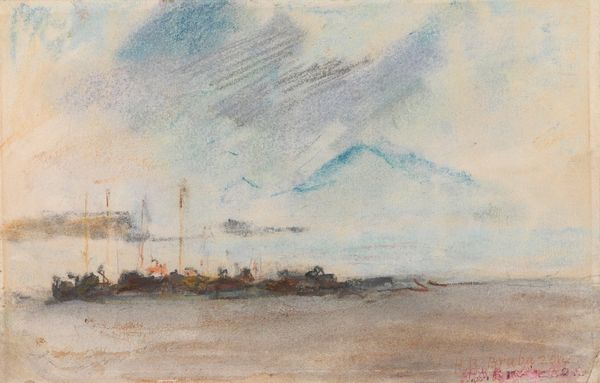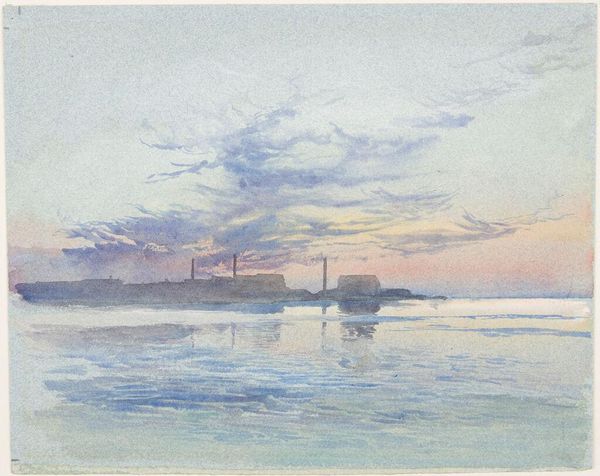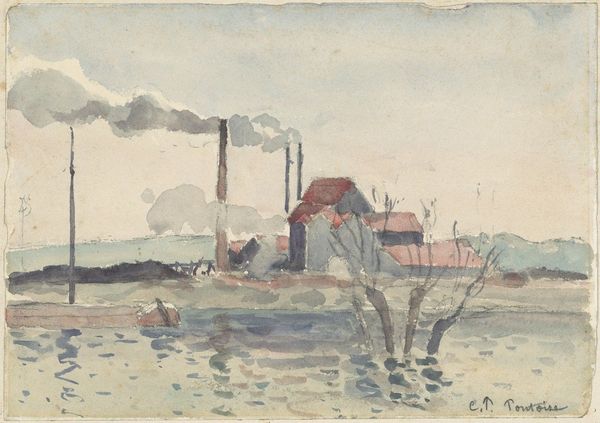
Copyright: Public Domain: Artvee
Editor: So, here we have Thomas Moran's "Smelting Works at Denver," created in 1892, seemingly using watercolors. It's immediately striking – the scene feels quite somber, almost apocalyptic, with those plumes of smoke against the sunset. What stands out to you in this work? Curator: Apocalyptic is a strong word! I like it! For me, it’s the paradox of beauty and industry that grabs my attention. Moran, famed for his romantic landscapes, turns his gaze upon industry. What’s fascinating is that he doesn't necessarily condemn it. Instead, he seeks a certain sublime quality in the smoke, the light, even the implied labor. The sunset fights to be seen through the gloom of civilization. Editor: Sublime... so it's not all doom and gloom? It's funny, the brushstrokes almost feel hopeful in the foreground but then the factory chimneys cut so starkly into the skyline. Curator: Exactly! Think about what America, and Denver in particular, represented then: opportunity, expansion, perhaps at a cost. This watercolor catches that tension perfectly. And consider Moran himself, known for idealizing the American West, yet he doesn't shy away from portraying its industrial realities. Does this shift your perspective at all? Editor: Definitely! It's like he's wrestling with progress, acknowledging the ugliness but still searching for something beautiful within it. I guess there’s more to this than first meets the eye, and I had forgotten about the sublime and the artist's place in all this industrial advancement. Curator: I find that the best art always reveals itself layer by layer, changing as we change. Perhaps we'll both see something different next time!
Comments
No comments
Be the first to comment and join the conversation on the ultimate creative platform.
